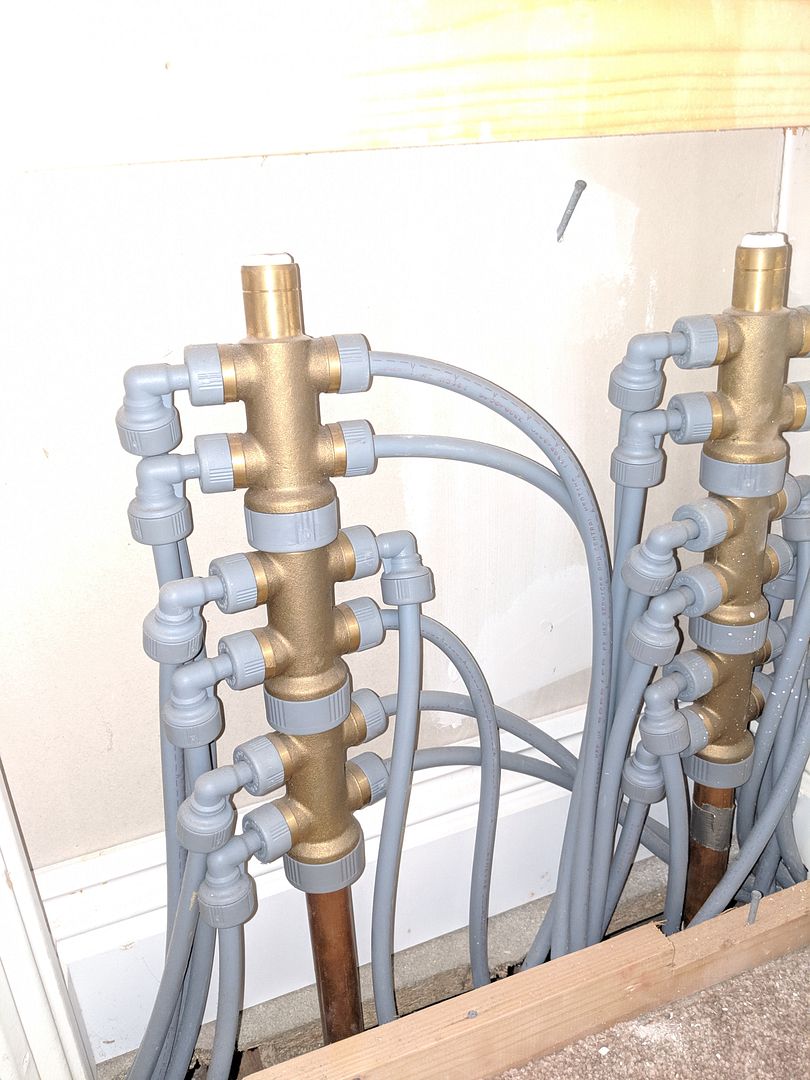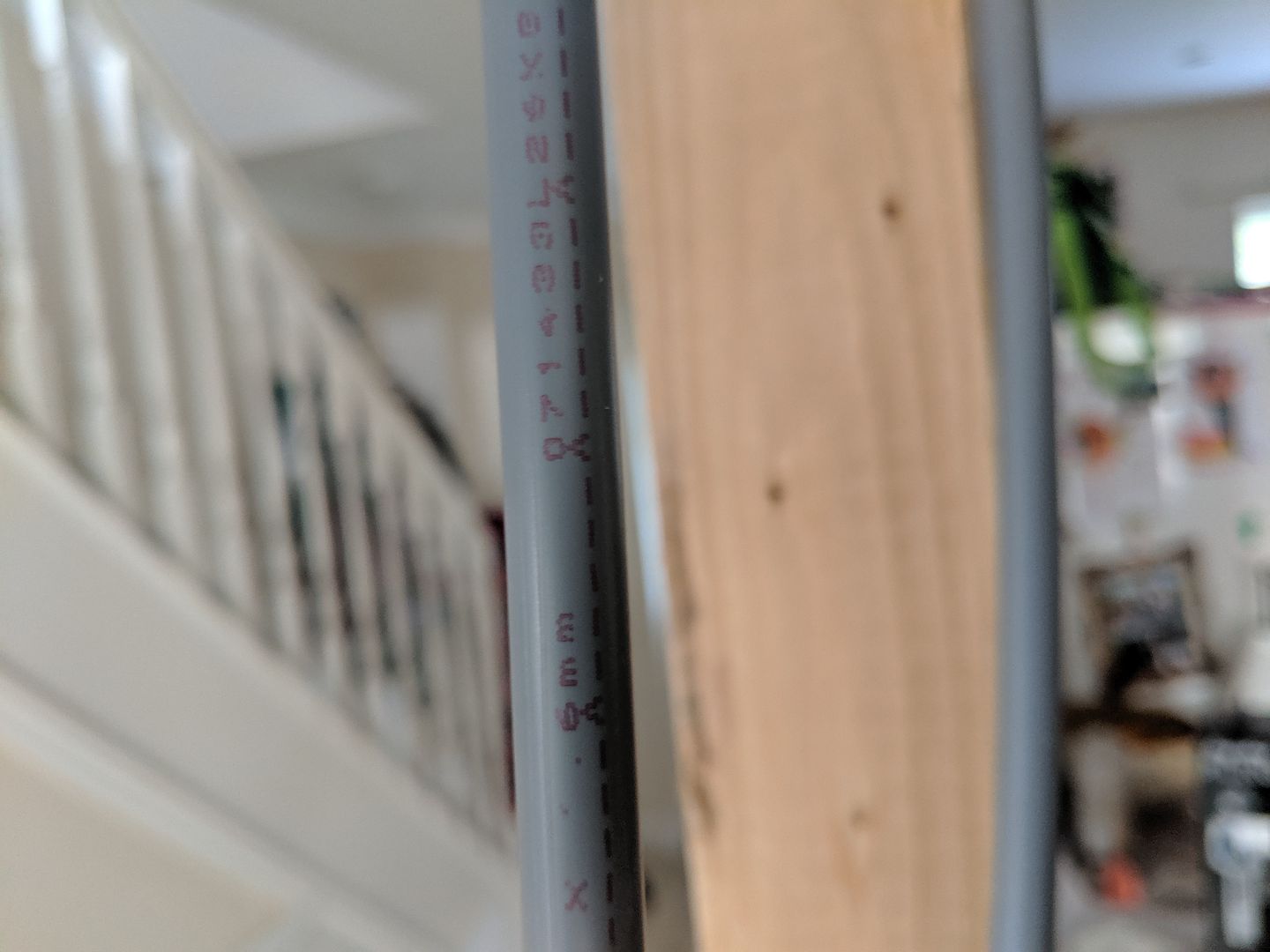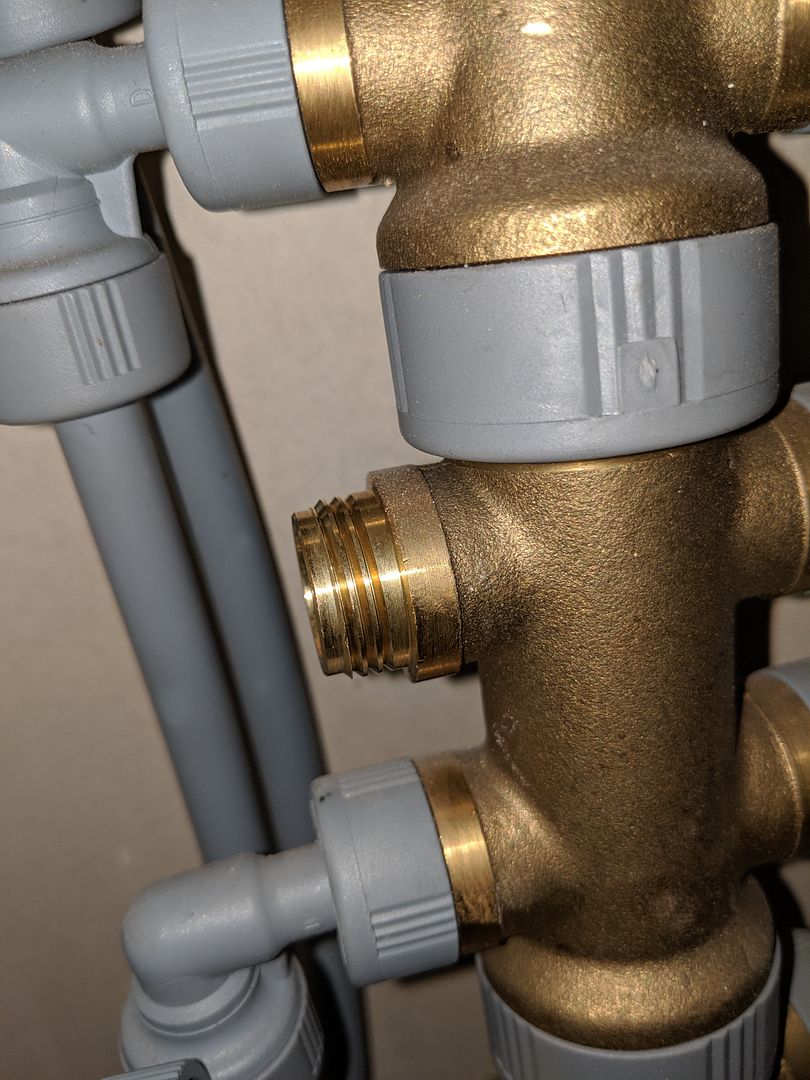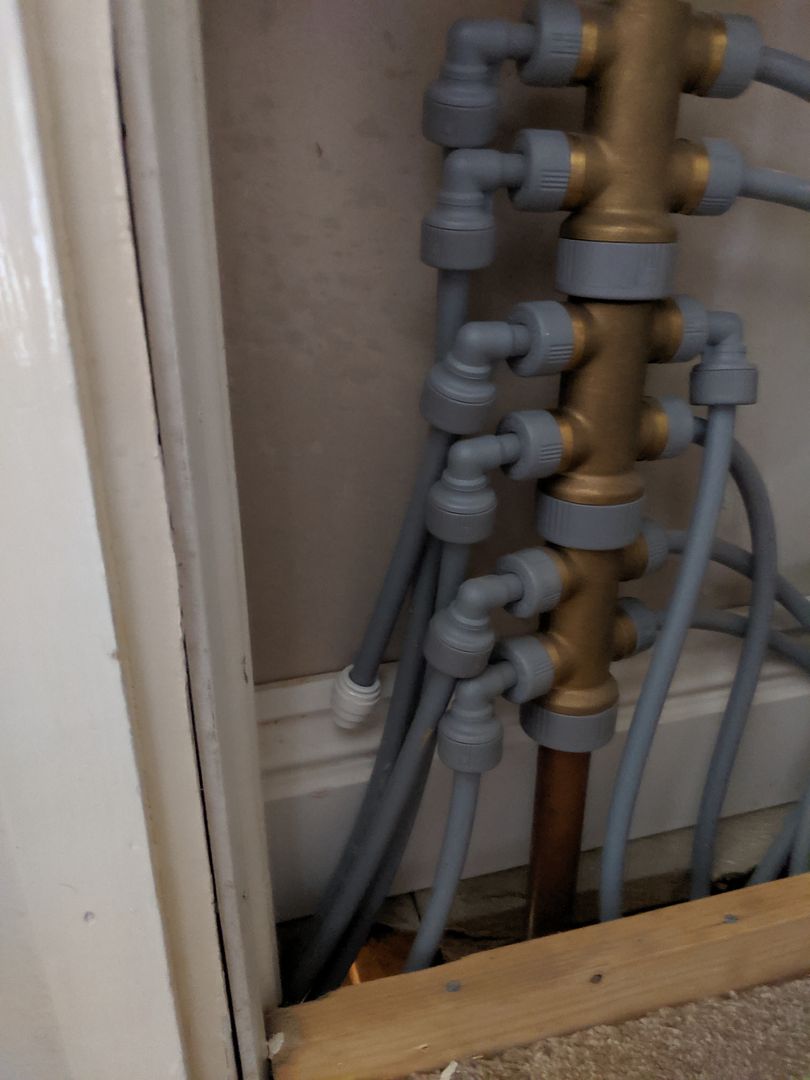- Joined
- 24 Nov 2017
- Messages
- 65
- Reaction score
- 6
- Country

I'm in the process of a knock through and also stud wall removal to create an open plan layout in my late 90's house. I've removed most of the stud wall and have got to the point where I need to remove a radiator to allow me to remove the timer frame work. I'm used to working with copper pipe work as opposed to plastic and have a few questions about the capping off of the pipe work. A neighbour suggested just cutting the pipe close to the ceiling, capping it and pushing it up into the ceiling out of the way before making good but I have read somewhere on the forum that it's best to cut and cap as close to the manifold as possible. Luckily, I can actually access my manifold as it's just been boxed in within the airing cupboard so it is easy to access. Should I just simply disconnect the pipe from the manifold and cap the manifold, or cut the pipe a few inches from the manifold and cap that ? I don't want to open a can of worms if removing the pipe from the manifold is going to cause problems and not give me any way of capping it?! I'm also unsure if the brass manifold is threaded for a cap where the plastic pipe attachment goes in? I've not come across these manifolds before so it's all new to me. Before anyone mentions it, I do however know that I have to do both the hot and return manifolds! Photos below of stud wall and manifold for assistance with suggestions
Stud wall :

Manifold :

Stud wall :

Manifold :




